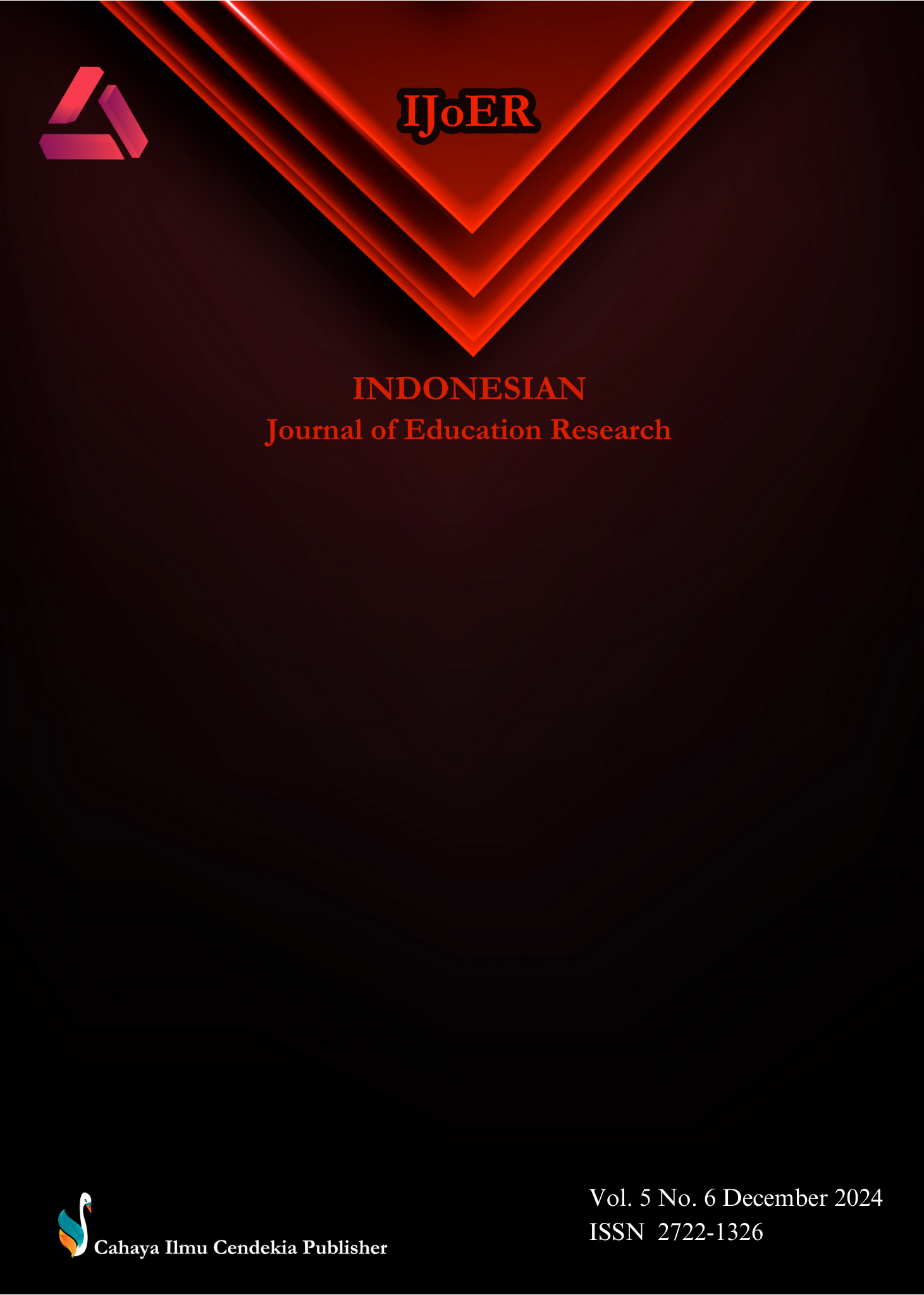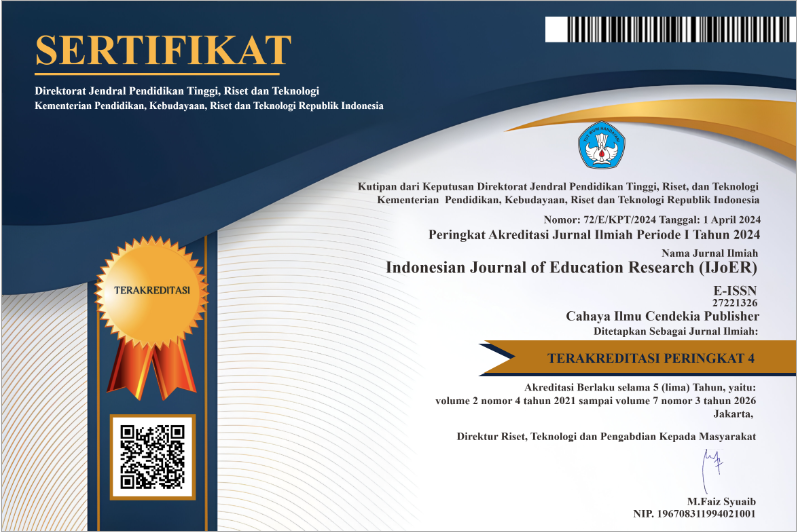Exploring the Education Mismatch: A Phenomenological Study of Technology and Livelihood Education (TLE) Teachers Assigned Outside Specialization
Abstract
Purpose of the study: This study investigates the experiences, challenges, job performance, financial and professional impact, coping strategies, and perceptions of Technology and Livelihood Education (TLE) teachers who are assigned outside their area of specialization.
Methodology: This study utilized a phenomenological approach. Twelve public school TLE (Technology and Livelihood Education) teachers were purposively selected based on their years of teaching outside their specialization and their willingness to participate. The data collection technique included the profiling of participants and the use of open-ended questions designed to elicit detailed descriptions of the participants’ experiences, challenges, and coping strategies. The data gathered from the interview sessions and written responses were transcribed and thematically analyzed to identify emerging themes.
Main Findings: The findings indicate that TLE teachers are often assigned to subjects like Filipino, MAPEH (Music, Arts, Physical Education, and Health), Values Education, Social Studies, English, and Science, mainly covering MAPEH and Filipino. This leads to challenges such as anxiety and questions about pursuing further education, hindering their professional growth. While the financial impact is negligible due to the provided materials, the mismatch affects teaching performance and student trust. Teachers often collaborate, use multimedia, and engage in self-directed learning to cope.
Novelty/Originality of this study: This study presents a comprehensive analysis of how TLE teachers teaching outside of specialization impact the quality of education provided to students. It recommends implementing free retooling programs, offering scholarship grants, and providing teacher training. The study emphasizes the need for teachers to teach within their specialization and for strengthening community partnerships to address the shortage of specialized educators.
References
H. A. Mohamad, D. Raffy, and R. S. Sinsuat, “Mismatch Of Teachers’ Qualifications And Subjects Taught: Effects On Students’ National Achievement Test Psychology And Education: A Multidisciplinary Journal Mismatch of”, doi: 10.5281/zenodo.7494892.
C. V. Cervantes and R. Cooper, “Labor market implications of education mismatch,” Eur Econ Rev, vol. 148, p. 104179, Sep. 2022, doi: 10.1016/J.EUROECOREV.2022.104179.
M. Piracha and F. Vadean, “Migrant educational mismatch and the labor market,” in International Handbook on the Economics of Migration, Edward Elgar Publishing Ltd., pp. 176–192, 2013, doi: 10.4337/9781782546078.00017.
S. McGuinness, K. Pouliakas, and P. Redmond, “Skills Mismatch: Concepts, Measurement And Policy Approaches,” J Econ Surv, vol. 32, no. 4, pp. 985–1015, Sep. 2018, doi: 10.1111/joes.12254.
I. Marinescu and R. Rathelot, “Mismatch Unemployment and the Geography of Job Search,” American Economic Journal: Macroeconomics, vol. 10, no. 3, pp. 42–70, Jul. 2018, doi: 10.1257/mac.20160312.
S.-J. Kim and S. O. Choi, “The Effects of Job Mismatch on Pay, Job Satisfaction, and Performance,” Journal of Open Innovation: Technology, Market, and Complexity, vol. 4, no. 4, p. 49, Dec. 2018, doi: 10.3390/joitmc4040049.
D. Carothers, H. Aydin, and M. Houdyshell, “Teacher shortages and cultural mismatch: District and university collaboration for recruiting.” www.jsser.org
H. Battu and K. A. Bender, “Educational mismatch in developing countries: A review of the existing evidence,” in The Economics of Education, Elsevier, 2020, pp. 269–289. doi: 10.1016/B978-0-12-815391-8.00020-3.
A. M. H. Chen, S. Brown, K. Mark, and S. McBane, “An overview of Instructional approaches and decision-making strategies to curtail curricular overload,” Am J Pharm Educ, vol. 87, no. 8, p. 100013, Aug. 2023, doi: 10.1016/j.ajpe.2022.12.001.
A. Popova, D. K. Evans, M. E. Breeding, and V. Arancibia, “Teacher Professional Development around the World: The Gap between Evidence and Practice,” World Bank Res Obs, vol. 37, no. 1, pp. 107–136, Jan. 2022, doi: 10.1093/wbro/lkab006.
M. Toprak, “Mismatch between teachers’ need for change and change in practice: what if what they see is not what they want?,” International Journal of Leadership in Education, vol. 21, no. 6, pp. 669–689, Nov. 2018, doi: 10.1080/13603124.2016.1272720.
B. Serikbayeva and K. Abdulla, “Education-Job Mismatch: Implications for Individual Earnings and Aggregate Output,” Soc Indic Res, vol. 163, no. 2, pp. 723–752, Sep. 2022, doi: 10.1007/s11205-022-02912-x.
D. W. Smith, “‘Phenomenology’, The Stanford Encyclopedia of Philosophy (Summer 2018 Edition).”
R. Q. Salvador, C. M. T. Borromeo, M. R. Limon, M. A. G. Parinas, L. L. De la Cruz, and J. M. B. Dalere, “Exploring Technical-Vocational Education Teachers’ Challenges and Adaptation Strategies in Teaching Courses Outside their Specializations,” Journal of Technical Education and Training, vol. 14, no. 2, Sep. 2022, doi: 10.30880/jtet.2022.14.02.004.
D. Zahavi, Phenomenology The Basics. Routledge, 2018. doi: 10.4324/9781315441603.
M.-T. Tang, “S. Käufer, A. Chemero, Phenomenology - An Introduction,” Phenomenological Reviews, vol. 1, p. 3, Jun. 2015, doi: 10.19079/pr.2015.11.tan.
S. Campbell, L. Macmillan, G. Wyness, A. Bryson, L. Stokes, and D. Wilkinson, “Mismatch in higher education: prevalence, drivers and outcomes,” 2019, www.nuffieldfoundation.org
V. Brouskeli, V. Kaltsi, and M. Loumakou, “Resilience and occupational well-being of secondary education teachers in Greece,” 2018.
B. E. Neubauer, C. T. Witkop, and L. Varpio, “How phenomenology can help us learn from the experiences of others,” Perspect Med Educ, vol. 8, no. 2, pp. 90–97, Apr. 2019, doi: 10.1007/S40037-019-0509-2.
A. Puente-Martínez, Z. Prizmic-Larsen, R. J. Larsen, S. Ubillos-Landa, and D. Páez-Rovira, “Age differences in emotion regulation during ongoing affective life: A naturalistic experience sampling study.,” Dev Psychol, vol. 57, no. 1, pp. 126–138, Jan. 2021, doi: 10.1037/dev0001138.
C. Maden-Eyiusta, “Role conflict, role ambiguity, and proactive behaviors: does flexible role orientation moderate the mediating impact of engagement?,” The International Journal of Human Resource Management, vol. 32, no. 13, pp. 2829–2855, Jul. 2021, doi: 10.1080/09585192.2019.1616590.
A. G. E. Co, C. R. G. Abella, and F. S. De Jesus, “Teaching Outside Specialization from the Perspective of Science Teachers,” OAlib, vol. 08, no. 08, pp. 1–13, 2021, doi: 10.4236/oalib.1107725.
F. M. Schnepfleitner and M. P. Ferreira, “Transformative Learning Theory – Is It Tıme to Add A Fourth Core Element?,” Journal of Educational Studies and Multidisciplinary Approaches, vol. 1, no. 1, pp. 40–49, Mar. 2021, doi: 10.51383/jesma.2021.9.
F. Jacob, S. John, and D. M. Gwany, “Teachers’ Pedagogical Content Knowledge And Students’ Academic Achievement: A Theoretical Overview”.
D. Irving-Bell, “Influence of teachers’ perceptions of subject knowledge on pedagogical approaches,” in Debates in Design and Technology Education, London: Routledge, 2022, pp. 165–177. doi: 10.4324/9781003166689-15.
I. A. Neville, L. A. Petrass, and F. Ben, “Cross disciplinary teaching: A pedagogical model to support teachers in the development and implementation of outdoor learning opportunities,” Journal of Outdoor and Environmental Education, vol. 26, no. 1, pp. 1–21, Apr. 2023, doi: 10.1007/s42322-022-00109-x.
K. Aldrup, B. Carstensen, and U. Klusmann, “Is Empathy the Key to Effective Teaching? A Systematic Review of Its Association with Teacher-Student Interactions and Student Outcomes,” Educ Psychol Rev, vol. 34, no. 3, pp. 1177–1216, Sep. 2022, doi: 10.1007/s10648-021-09649-y.
N. Dvir and O. Schatz-Oppenheimer, “Novice teachers in a changing reality,” European Journal of Teacher Education, vol. 43, no. 4, pp. 639–656, Aug. 2020, doi: 10.1080/02619768.2020.1821360.
J. Alvehus, N. Avnoon, and A. L. Oliver, “‘It’s complicated’: Professional opacity, duality, and ambiguity—A response to Noordegraaf (2020),” Journal of Professions and Organization, vol. 8, no. 2, pp. 200–213, Aug. 2021, doi: 10.1093/jpo/joab006.
L. de Jong, J. Meirink, and W. Admiraal, “School-based teacher collaboration: Different learning opportunities across various contexts,” Teach Teach Educ, vol. 86, p. 102925, Nov. 2019, doi: 10.1016/j.tate.2019.102925.
H. Daka et al., “Bridging the Gap: Addressing the Disparity between Higher Education Knowledge and Industry Needs,” International Journal of Social Science and Education Research Studies, vol. 03, no. 08, Aug. 2023, doi: 10.55677/ijssers/V03I8Y2023-12.
A. M. Navarro, “School Infrastructure in the Philippines: Where Are We Now and Where Should We Be Heading?,” 2022, https://www.pids.gov.ph
P. A. Heslin, L. A. Keating, and S. J. Ashford, “How being in learning mode may enable a sustainable career across the lifespan,” J Vocat Behav, vol. 117, p. 103324, Mar. 2020, doi: 10.1016/j.jvb.2019.103324.
Copyright (c) 2024 John Paul C. Demapendan

This work is licensed under a Creative Commons Attribution 4.0 International License.
Authors who publish with this journal agree to the following terms:
- Authors retain copyright and acknowledge that the Indonesian Journal of Education Research (IJoER) is the first publisher licensed under a Creative Commons Attribution 4.0 International License.
- Authors are able to enter into separate, additional contractual arrangements for the non-exclusive distribution of the journal's published version of the work (e.g., post it to an institutional repository or publish it in a book), with an acknowledgment of its initial publication in this journal.
- Authors are permitted and encouraged to post their work online (e.g., in institutional repositories or on their website) prior to and during the submission process, as it can lead to productive exchanges and earlier and greater citation of published work.







.png)
.png)




















